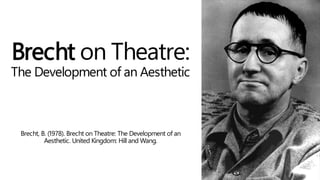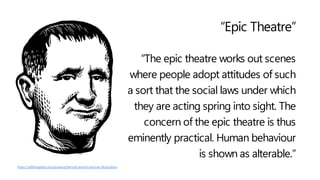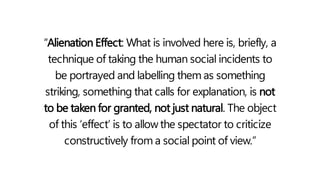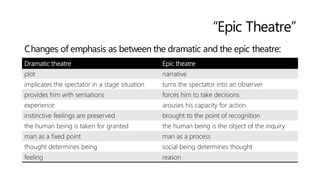Bertolt Brecht's 'Brecht on Theatre' emphasizes the distinctions between traditional and epic theatre, focusing on the latter's goal of social change and audience engagement. He introduces the 'alienation effect' as a technique to prevent audience identification with characters, promoting critical reflection on social issues. Brecht critiques the commercialization of art, advocating for a theatre that instructs while entertaining, encouraging active audience participation and societal transformation.



























